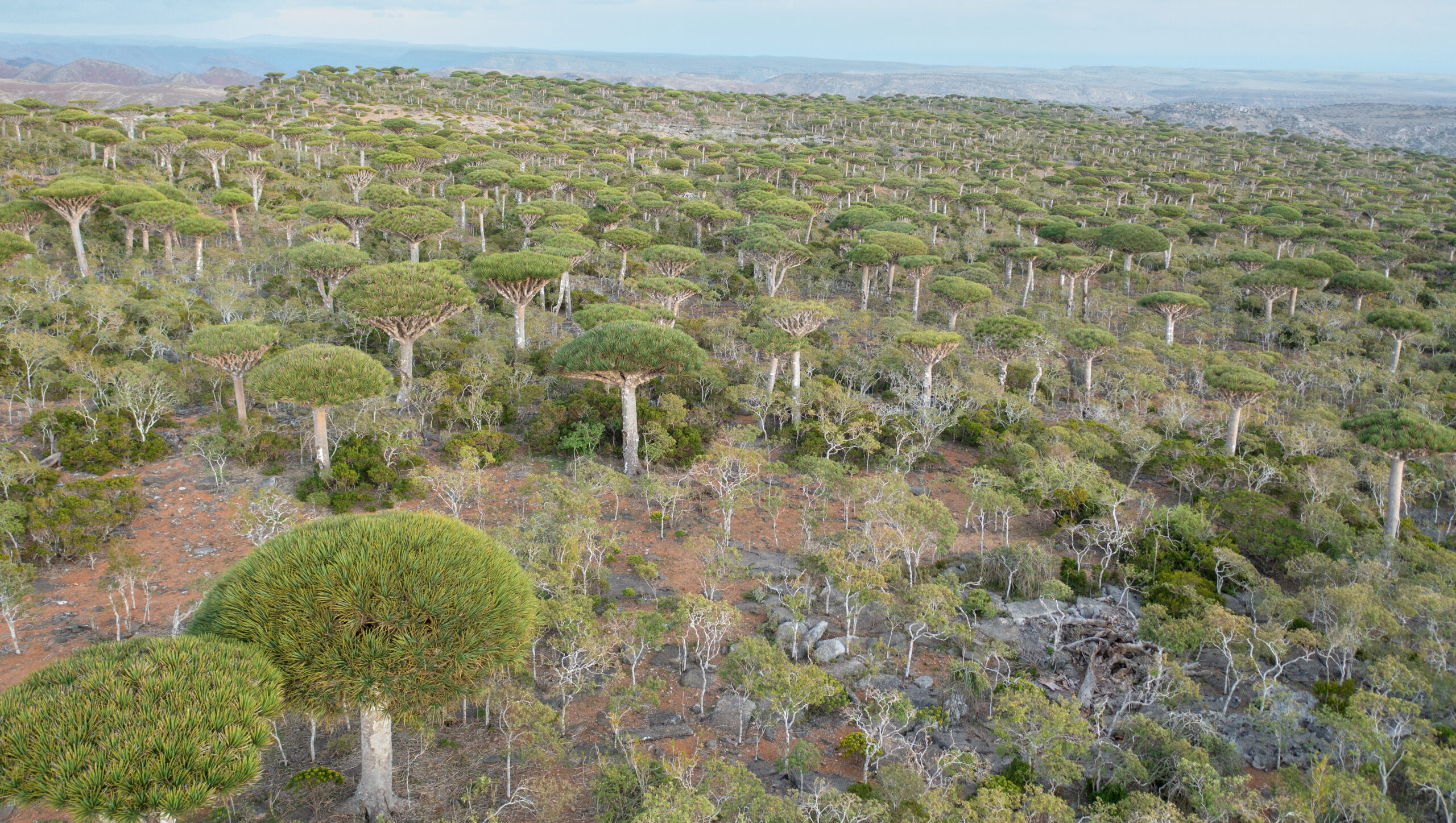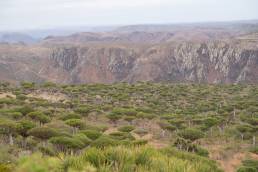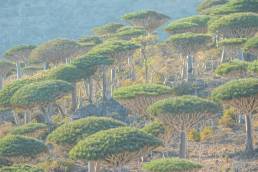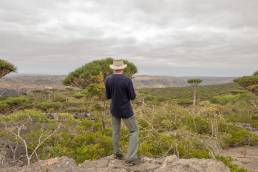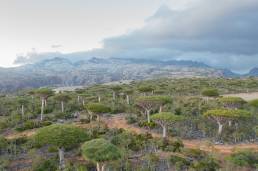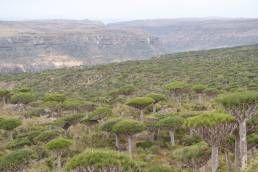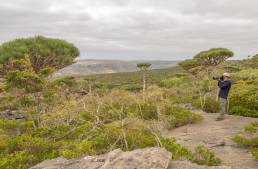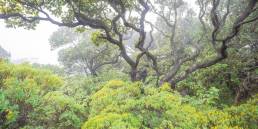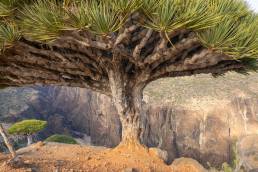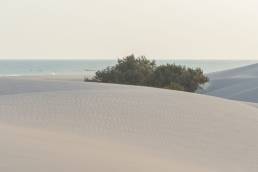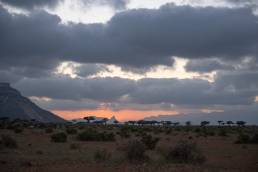The dragon blood tree (Dracaena cinnabari) is undoubtedly the most famous of all plant species on Socotra, and you will know immediately this is a unique tree found only on this very special island. The plant is used as a logo and symbol of anything Socotri, and travel companies, foreign and Socotri, will have this tree prominently placed in their communication.
Your first encounter with it will almost certainly bring awe and inspiration, and a sense of being on a land so different from the rest of the world that it might be a different planet entirely.
If one tree is not inspiring enough, a forest of these dragons most certainly will blow your socks off! Walking amongst the trunks and crowns of these trees is like walking in a living ark of life of past aeons.
Almost without exception these trees are very old – centuries old, some up to 700 years, which is a mighty sight indeed, but they are in their last stages of life and there are no ones to carry on their legacy. The forest floor is completely devoid of seedlings – there is no regrowth at all, as the goats have browsed every strand of grass and vegetation for decades upon decades. Firhmin is in dire straits and it urgently needs help to secure its future. Fortunately there are two enclosures with seedlings that will hopefully grow to sizes not threatened by the goats when the fences are brought down in the future. There are also several dragon blood tree nurseries on Socotra as well as several Socotris educating themselves in forestry conservation, so there is hope. Climate change is another severe threat, as the weather patterns are changing and water becoming very erratic.
As a tourist we all need to ask ourselves how we can assist in the conservation of the dragon blood trees, but also all other endemic species on Socotra.
Last updated on 8 November 2024
